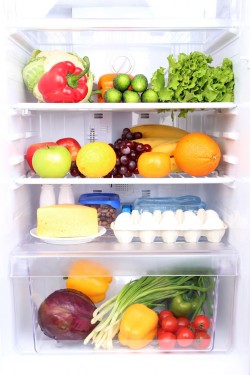
The 2 Biggest Myths About Frozen Meat
Frozen meat is less nutritional?
According to a recent food and nutrition research conducted by the United States Department of Agriculture (USDA)[1], “the freezing process itself does not destroy nutrients in meat and poultry products, (and) there is little change in nutrient value during freezer storage.” In other words, the nutritional value of frozen and fresh meat is identical! Moreover, because there’s only a slight loss of protein content as a result of nutrient retention from the freezing process, this translates into a larger intake of protein from frozen meat. This is crucial as protein promotes growth and helps with repair of body tissues.
Is the taste of frozen meat inferior to that of fresh meat?
It’s widely believed that there is a huge difference between the texture of defrosted meat and fresh meat. The truth is, this is only the case because most people have been thawing their meat wrong!
There are 4 main thawing methods:
- Thaw at room temperature
- Use a microwave
- Defrost in tap water
- Thaw in the refrigerator
While methods 1-3 are most commonly used, the safest and best way to retain the freshness of meat is actually to thaw it in the refrigerator, as it’s low-temperature can effectively prevent the growth of bacteria.
Now that you know the correct defrosting method, it is important to do it right! It’s best to plan ahead and prepare your meal a day in advance. This way, you’ll have enough time to start defrosting meat the night before.
Thawing Tips
- Food must be wrapped in plastic wrap to prevent cross-contamination
- Uncooked meat must be placed on the lowest shelf in the refrigerator
- Do not re-frost food that has already been defrosted in order to prevent bacterial food poisoning
Menu Design 1 2 3
It is not difficult to design a balanced meal – just start with the following tips!
- Include vegetables in daily dishes. For example, Fried Chicken Fillet with Tri-color Peppers, Shredded Chicken with Tomato and Onion etc.
- Hong Kong Department of Health[2] recommends adults to have a “2+3” meal everyday, i.e. 2 portions of fruit and 3 portions of vegetables, to ensure sufficient intake of dietary fiber, vitamins and minerals. 1 portion of vegetables equals to ½ bowl of cooked vegetables, or 1 bowl of uncooked veggies (e.g. salad)
- Even if you are preparing a western meal, such as pork or chicken steak, you can still prepare broccoli and carrot or salads as a side.
Incorporating a small portion of vegetables and fruits for breakfast, lunch and dinner will help you achieve “2+3”. It is also a good idea to add a handful of vegetables to mains, such as stir-fried chicken or pork dishes. Set an example for your kids and eat more fruits and vegetables to nurture their interest in the importance of eating a balanced meal!

[1] United States Department of Agriculture: Freezing and Food Safetyhttp://www.fsis.usda.gov/wps/portal/fsis/topics/food-safety-education/ge...
[2] Hong Kong Department of Health: Two Plus Three Everydayhttp://www.cheu.gov.hk/eng/info/2plus3_14.htm








